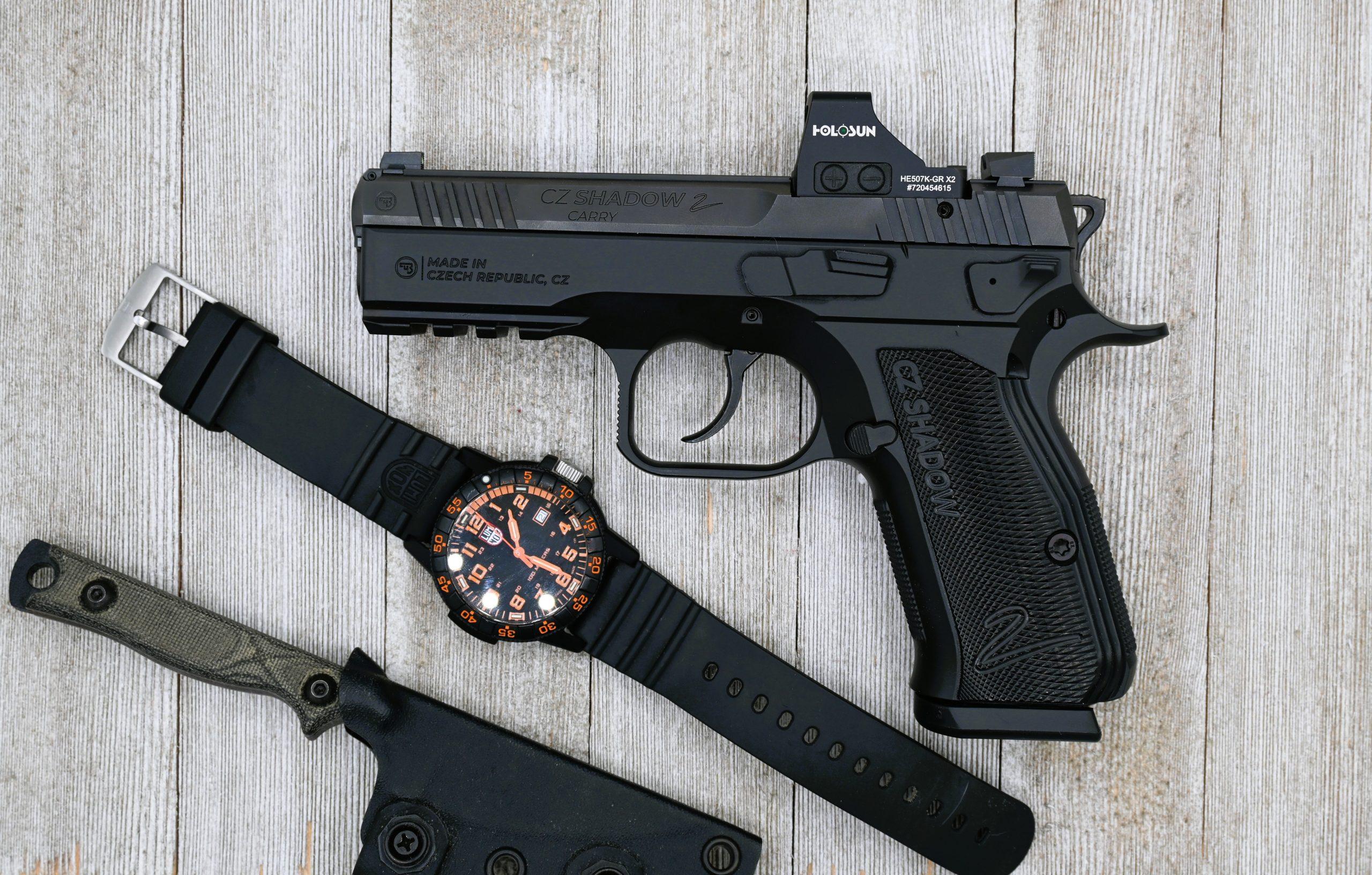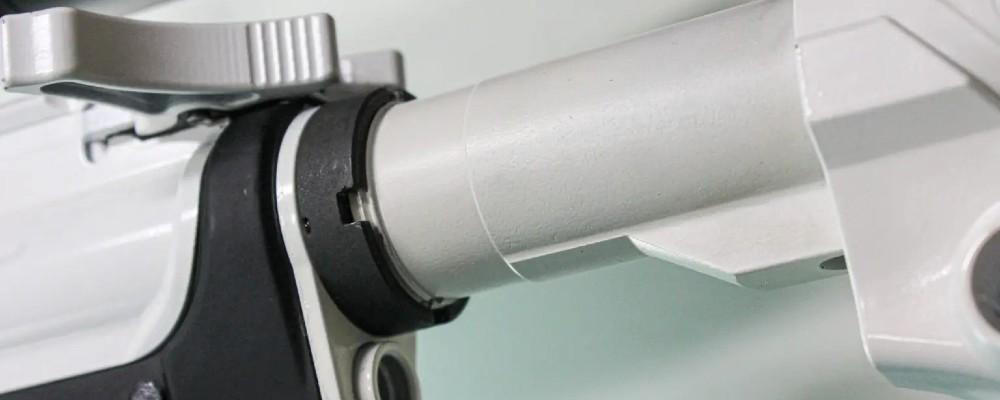TASER Pulse 2 Review: Watt’s Up Doc
Dive deep into the TASER Pulse 2 design, features, and user experience. Discover its historical evolution and its place in modern personal defense tools.
Written By
Michael Crites
Licensed Concealed Carry Holder
Reviewed by
Editorial Team
Learn About The Editorial Team
Share:
Products are selected by our editors. We may earn a commission on purchases from a link. How we select gear.

Updated
Dec 2025
The evolution from primitive weapons to modern self-defense tools has been nothing short of remarkable. Long gone are the days of relying on stones or pointy sticks — since the invention of firearms, humans have always sought better and more effective ways to protect themselves.
Enter the TASER Pulse 2, a less-than-lethal tool that promises safety without lethal consequences.
The TASER Pulse 2 is designed with the civilian in mind. It offers a blend of usability and straightforward effectiveness by mimicking the dimensions of a subcompact handgun; a nod to familiar self-defense tools but with a twist. Instead of bullets, it fires two dart electrodes that deliver a jolt of electricity, causing “neuromuscular incapacitation” (say that five times fast.)
What sets the TASER Pulse 2apart is how light and user-friendly it is. Anyone who has shopped for a concealed carry pistol is familiar with the features that add value (compactness, a light rail, easy-to-manipulate controls, etc.), and the TASER’s integrated flashlight and laser, (which performed well in our nighttime environment tests) demonstrated the device’s adaptability to various scenarios.
Historically, the concept of a TASER isn’t new. Jack Cover, a NASA researcher, invented the first version in 1969, naming it after a book he loved as a child, “Tom Swift and His Electric Rifle” (but adding an “A” because they got tired of answering the phone ‘T.S.E.R.’). The TASER Pulse 2 builds on the concept, refining the technology into a more approachable civilian-friendly package.
As we delve deeper into this review, we’ll explore the TASER Pulse’s features, its real-world applications, and its place in the broader context of personal defense tools.
Whether you’re a seasoned self-defense enthusiast or someone looking for a reliable safety tool, this review promises a comprehensive look at a device that might just be a game-changer.
In This Article
What's the Pulse 2?
TASER Pulse 2 vs Pulse+ vs Original Pulse Comparison
If you’ve been looking at TASER’s civilian lineup, you’ve probably noticed there are multiple “Pulse” models floating around. The confusion is understandable—TASER introduced the original Pulse in 2016, followed by the Pulse+ in 2019, and now the Pulse 2 in 2024. While they share the same fundamental DNA, there are some meaningful differences worth understanding before you drop four hundred dollars on a less-lethal defense tool.
The evolution of the Pulse line reflects TASER’s ongoing effort to balance features, cost, and usability for civilian users. Each generation brought specific improvements, though not all features survived from one model to the next.
The Pulse+ represented an experiment in connected safety technology that ultimately didn’t make the cut for the current generation, while the Pulse 2 focuses on refined ergonomics and durability improvements.
Side-by-Side Comparison
| Feature | Original Pulse | Pulse+ | Pulse 2 |
|---|---|---|---|
MSRP | $399 | $499 | $399.99 |
Current Status | Discontinued | Discontinued (April 2022) | Current Model |
Effective Range | 15 feet | 15 feet | 15 feet |
Weight | 8 oz | 8 oz | 8 oz |
Electrical Cycle | 30 seconds | 30 seconds | 30 seconds |
Laser/Light | Yes | Yes | Yes |
Noonlight Integration | No | Yes | No |
Grip Texture | Basic | Basic | Enhanced/Textured |
Durability | Standard polymer | Standard polymer | High-impact polymer |
Battery Type | Lithium power pack | 2x CR123A | Lithium power pack |
Battery Life | ~1 year | ~2 years | ~1 year |
Cartridge Compatibility | All Pulse cartridges | All Pulse cartridges | All Pulse cartridges |
Safe Escape Guarantee | Yes | Yes | Yes |
What Changed Between Generations
The jump from the original Pulse to the Pulse+ was primarily about connectivity. TASER partnered with Noonlight, a professional monitoring service that would automatically alert emergency responders when the Pulse+ was deployed.
It was an interesting concept—deploy your TASER in self-defense, and help was already on the way without you needing to fumble for your phone. The Pulse+ also switched to standard CR123A batteries, which you could pick up at any hardware store, rather than the proprietary battery pack.
The Pulse 2 represents a different philosophy. TASER stripped out the Noonlight integration, which brought the price back down to the original Pulse’s $399 asking price. Instead of connected features, they focused on what you can feel in your hand. The Pulse 2’s grip features more aggressive texturing than either predecessor, giving you better purchase when your palms are sweaty and your heart rate is spiked.
The housing moved to what TASER describes as “high-impact polymer,” which is marketing speak for “we made it tougher.” Having handled all three models, the Pulse 2 does feel more substantial, though whether that translates to meaningful durability gains in real-world defensive use remains to be seen.
Why the Noonlight Feature Disappeared
The Pulse+ lasted just three years before TASER discontinued it and launched the Pulse 2 without the Noonlight integration. I suspect this came down to a combination of factors. First, adding that connectivity bumped the price by a hundred dollars, which is significant when you’re competing against ten-dollar cans of pepper spray for the self-defense dollar.
Second, the feature required users to set up and maintain the app connection, adding complexity to what should be a simple grab-and-go defensive tool. Third, and this is speculation, I’m guessing the actual usage data showed most people weren’t bothering with the setup.
From a practical standpoint, if you deploy a TASER in legitimate self-defense, you’re going to be calling 911 anyway. The 30-second electrical cycle gives you time to create distance and make that call yourself. The Noonlight automatic alert was a nice-to-have, not a must-have, and TASER apparently decided it wasn’t worth the cost premium.
Should You Upgrade?
If you own an original Pulse or Pulse+, I wouldn’t rush out to upgrade to the Pulse 2. The core functionality is identical—same range, same incapacitation time, same cartridge system, same Safe Escape guarantee. The improvements are incremental rather than revolutionary. If your current Pulse works reliably and you’re satisfied with it, stick with what you have and spend that four hundred dollars on training or spare cartridges.
That said, if you’re shopping for your first TASER, the Pulse 2 is the clear choice. It’s the current model with active support, costs the same as the original Pulse, and incorporates the small-but-meaningful ergonomic improvements TASER learned over two previous generations. The enhanced grip texture is noticeable, especially if you’re carrying in humid climates or your hands tend to sweat under stress.
One practical consideration: if you’re buying used, you might find Pulse+ units floating around at attractive prices since the model was discontinued. Just understand you’re buying into a dead platform.
TASER will still honor the Safe Escape guarantee and sell you cartridges, but don’t expect software updates or Noonlight support going forward. The original Pulse is less common in the used market but follows the same logic—it’ll work, but you’re not getting the latest refinements.
The bottom line is that all three models share the same fundamental capability to deliver a 15-foot, 30-second incapacitating electrical charge. The differences are in the details—grip feel, battery type, connected features—rather than core defensive effectiveness.
If you’re buying new, get the Pulse 2. If you already own a Pulse or Pulse+, you’re not missing out on anything game-changing.
How We Tested
Deployment & Accuracy
TASER devices work differently than firearms, so accuracy testing requires a different approach. I fired cartridges at 5, 10, and 15 feet to evaluate probe deployment patterns and measure probe divergence at each distance.
Reliability
I fired a total of six cartridges over the testing period to verify consistent deployment across multiple units. Each cartridge was fired at a clean target, and I documented any failures, inconsistent deployments, or probe malfunctions.
Durability
The Pulse 2’s high-impact polymer construction was evaluated through controlled drop testing from waist height onto concrete to simulate real-world drops while drawing from a holster or fumbling during a high-stress encounter.
Concealment
Less-lethal options only work if you actually carry them, so I tested the Pulse 2’s concealability across multiple carry methods.
More on Our Testing Process
Product Overview
At its core, the TASER Pulse 2 is a “civilian legal” less-lethal tool, designed with the shape and feel of a subcompact handgun.
This design choice is deliberate, providing firearm users with a familiar grip and handling experience, while also offering those compact pistol benefits to those who have never handled a firearm.
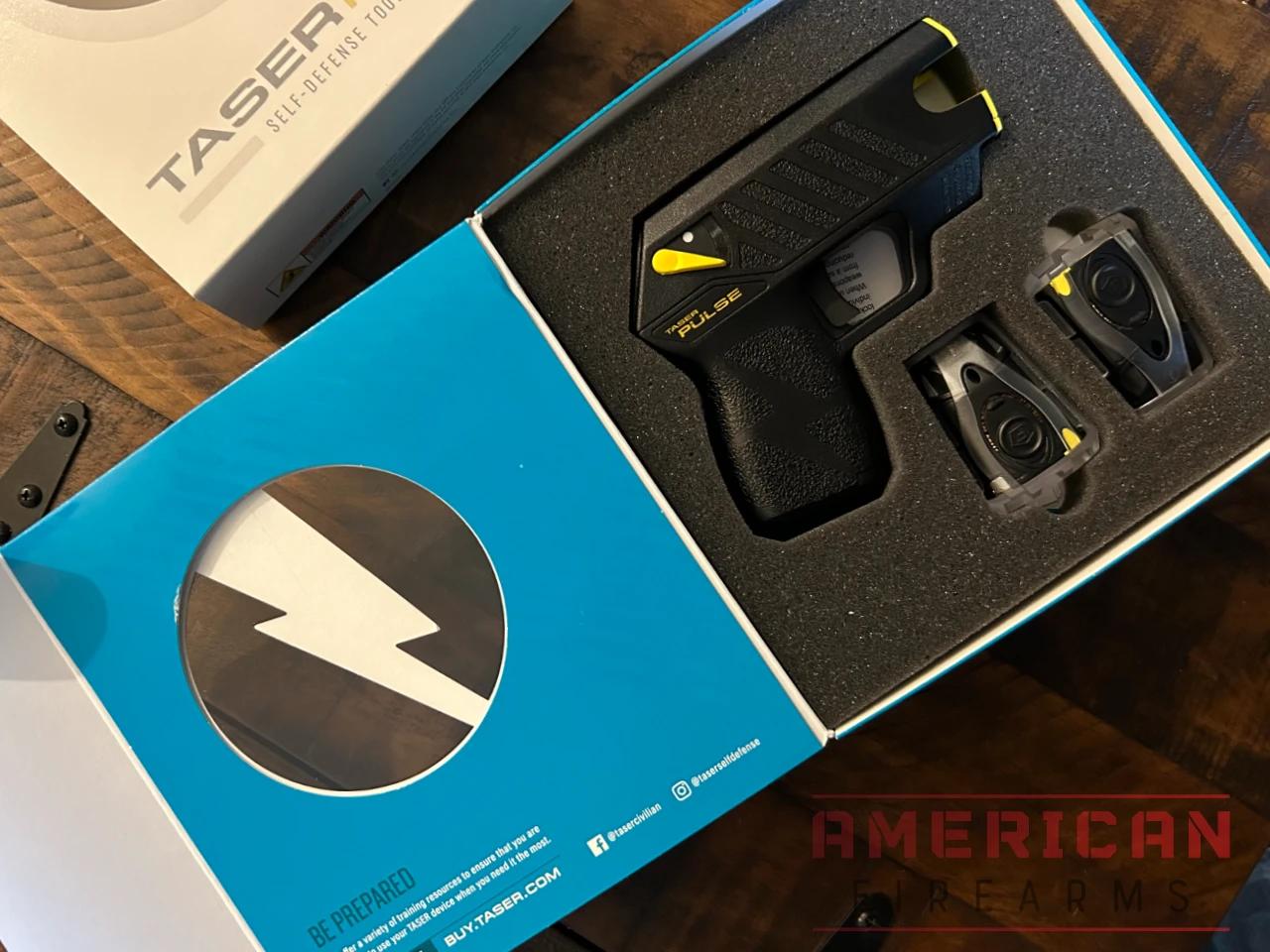
However, unlike traditional firearms, the Pulse 2 deploys two dart electrodes that deliver a controlled electric shock, incapacitating threats without causing lethal harm.
My wife, for example, has always carried a deterrent spray but hasn’t been comfortable with carrying a firearm. She was excited to hear about the Pulse 2, which she felt was less intimidating than a firearm but more effective than a spray, which requires an assailant to get close and can backfire.
You get two dart cartridges with the TASER, with the cartridges are housed in a clear polymer exoskeleton case. Also in the box is a paper practice target and the instructions.
Once you pry a cartridge free from its case, inserting it into the front of the Pulse 2 is straightforward. There are two clear grab points on either side of the cartridges to compress the retaining tabs which slide home with a satisfying “clunk.” Press the tabs on either side of the cartridge to remove it. An ambidextrous safety lever activates the unit and engages the light and laser.
For those familiar with firearms, the Pulse’s size is comparable to that of a Glock 19, offering a compact yet effective defense tool.

One of the standout features of the Pulse 2 is its trigger. The thing is super light and has almost no travel. My scale had it coming in at 8 ounces to 1 lb., and the actuation is more like a switch than a traditional trigger.
There’s clearly no trigger bar or spring — a trigger pull activates a switch — there’s no sear, striker, hammer, or spring pressure, so the pull is practically instant. If you’ve ever played paintball the Pulse 2 trigger will feel familiar.
However, like all tools, the TASER Pulse 2 is not without its challenges. Its effectiveness can be compromised by thick clothing, and both probes need to make contact with the target to deliver the electric shock.
Additionally, while the Pulse’s laser is visible indoors, but can be tough to see in bright daylight. Due to its relatively short effective range of 15 feet, users need to be aware of the probe’s spread and trajectory, especially if attempting unconventional shots or in a rush, which means practicing with cartridges that will cost you more than $20 each.
Features & Specifications
| Specification | Details |
|---|---|
Model | TASER Pulse 2 |
MSRP | $399.99 |
Length | 5.25 inches |
Height | 4.75 inches |
Width | 1.25 inches |
Weight | 8 ounces (unloaded) |
Effective Range | 15 feet |
Shots Per Cartridge | 1 (multiple 30-second cycles possible if probes remain attached) |
Electrical Cycle Duration | 30 seconds per trigger pull |
Maximum Voltage Output | 50000 volts (approximately 2000 volts enter body) |
Battery Type | Non-rechargeable lithium power pack |
Battery Life | Approximately 1 year / 50 firings |
Sights | Fixed front and rear iron sights (yellow hi-vis front) |
Laser | Red aiming laser |
Light | Integrated LED flashlight |
Housing Material | High-impact polymer |
Safety | Ambidextrous slide safety |
What's Included | Pulse 2 device 2 cartridges lithium battery (installed) practice target neoprene carry sleeve |
Cartridge Compatibility | All TASER Pulse-series cartridges |
Warranty | Safe Escape Product Replacement Guarantee |
As I delved into the TASER Pulse 2, I was immediately struck by how light it is, the compact design and the solid features packed into such a small device.
Let’s break down the key features and specifications that make the Pulse 2 stand out in the realm of personal defense tools.
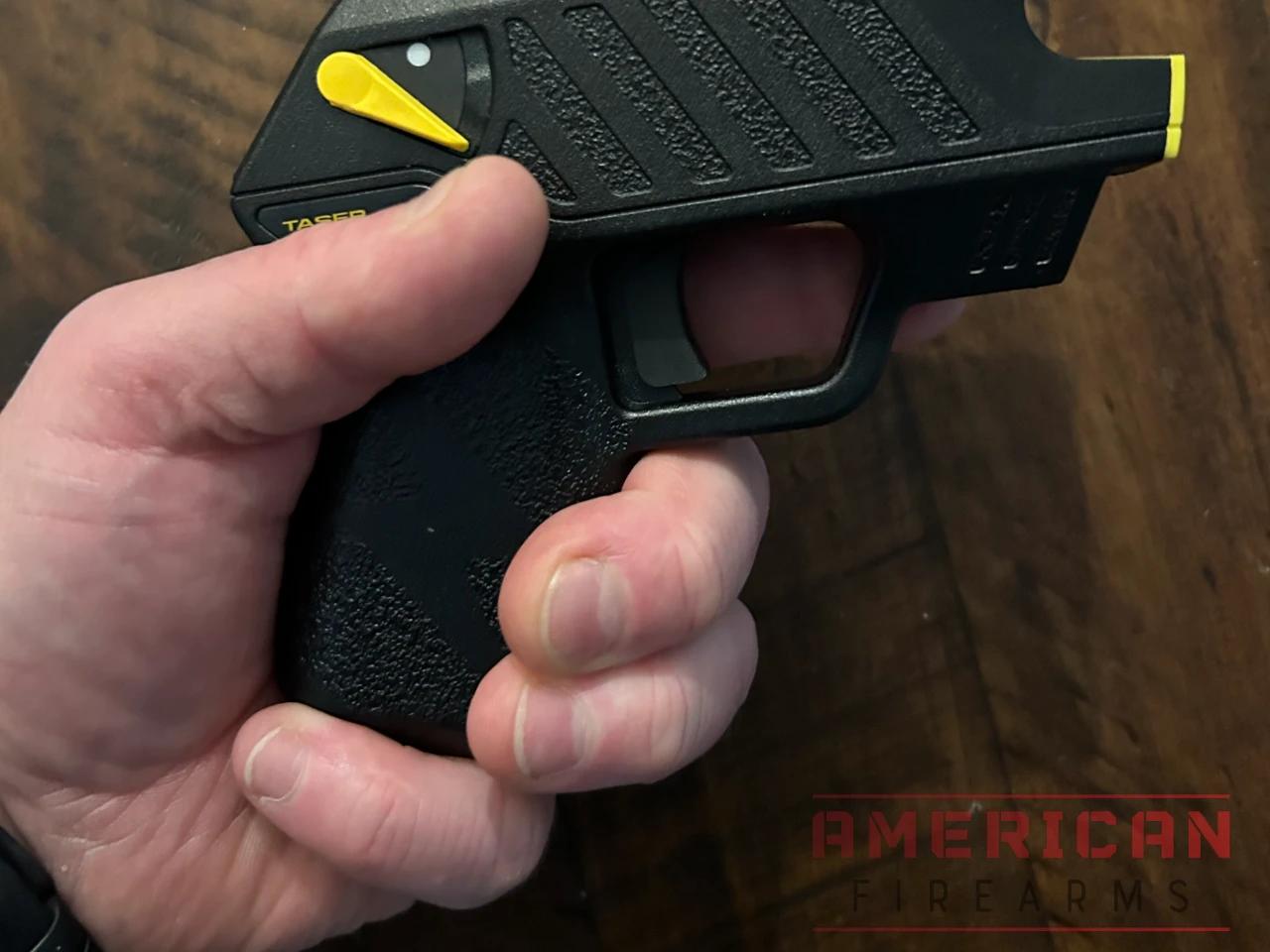
Cartridges & Design:
The Pulse 2 includes two cartridges, neatly housed in a clear polymer exoskeleton case. Removing the cartridges from the cases takes some effort, which makes sense — you don’t want them falling onto the floor — but I don’t like that it takes both hands to free them.
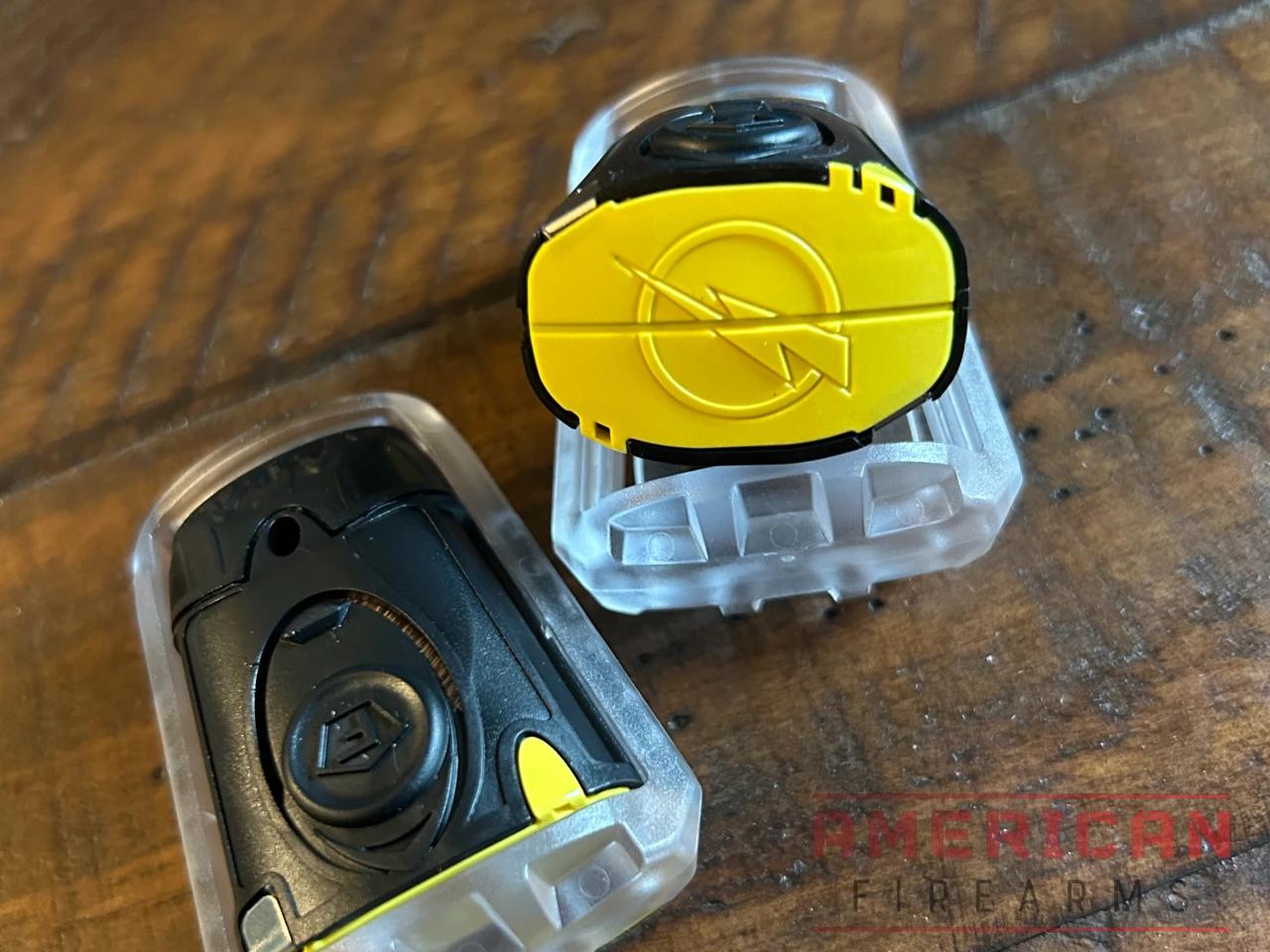
The cartridges use two tabs at the sides to lock into the front of the unit, which can be pressed to remove the cartridge.
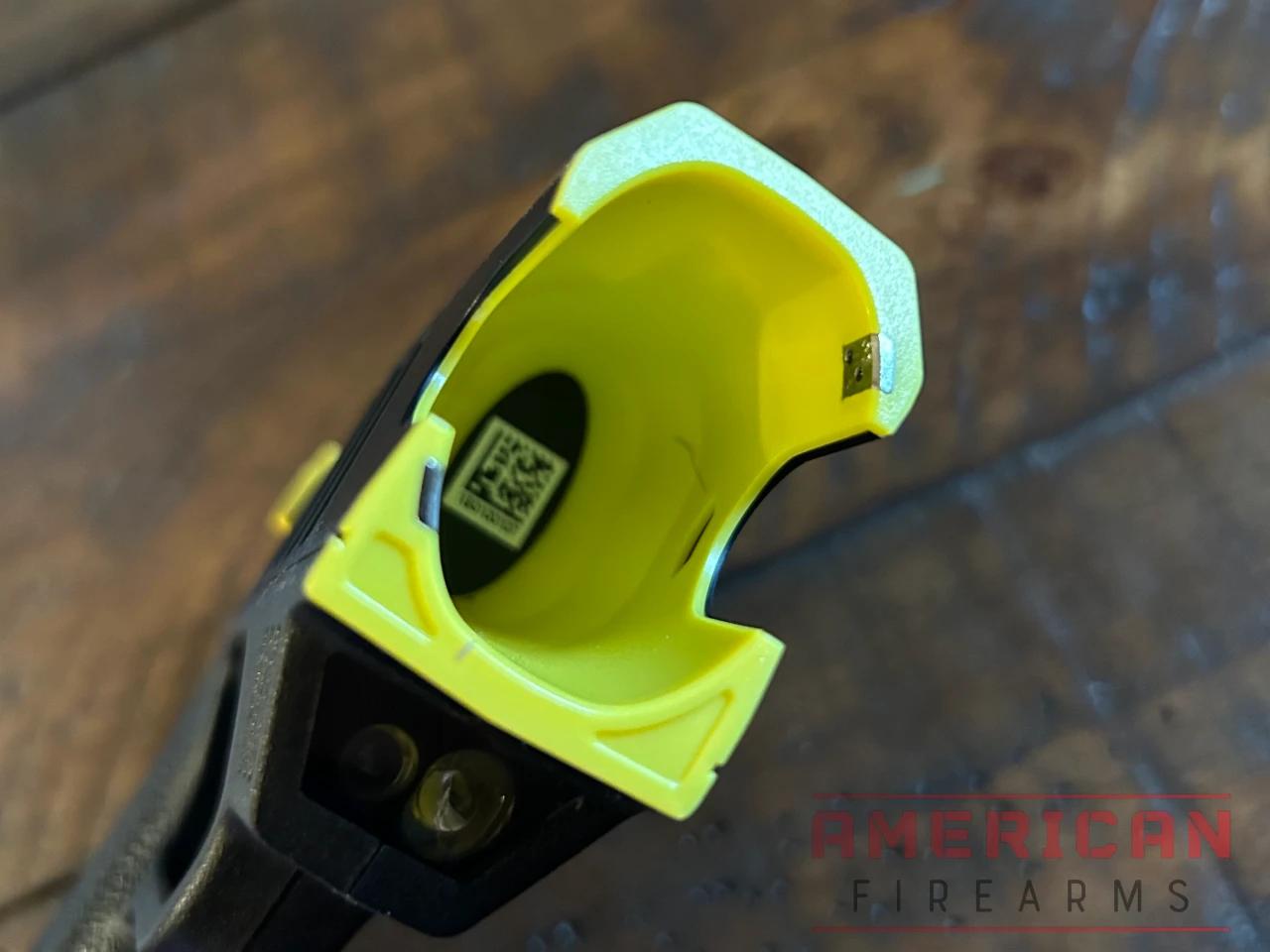
Once free they are easily inserted into the front of the device, making it ready for action.
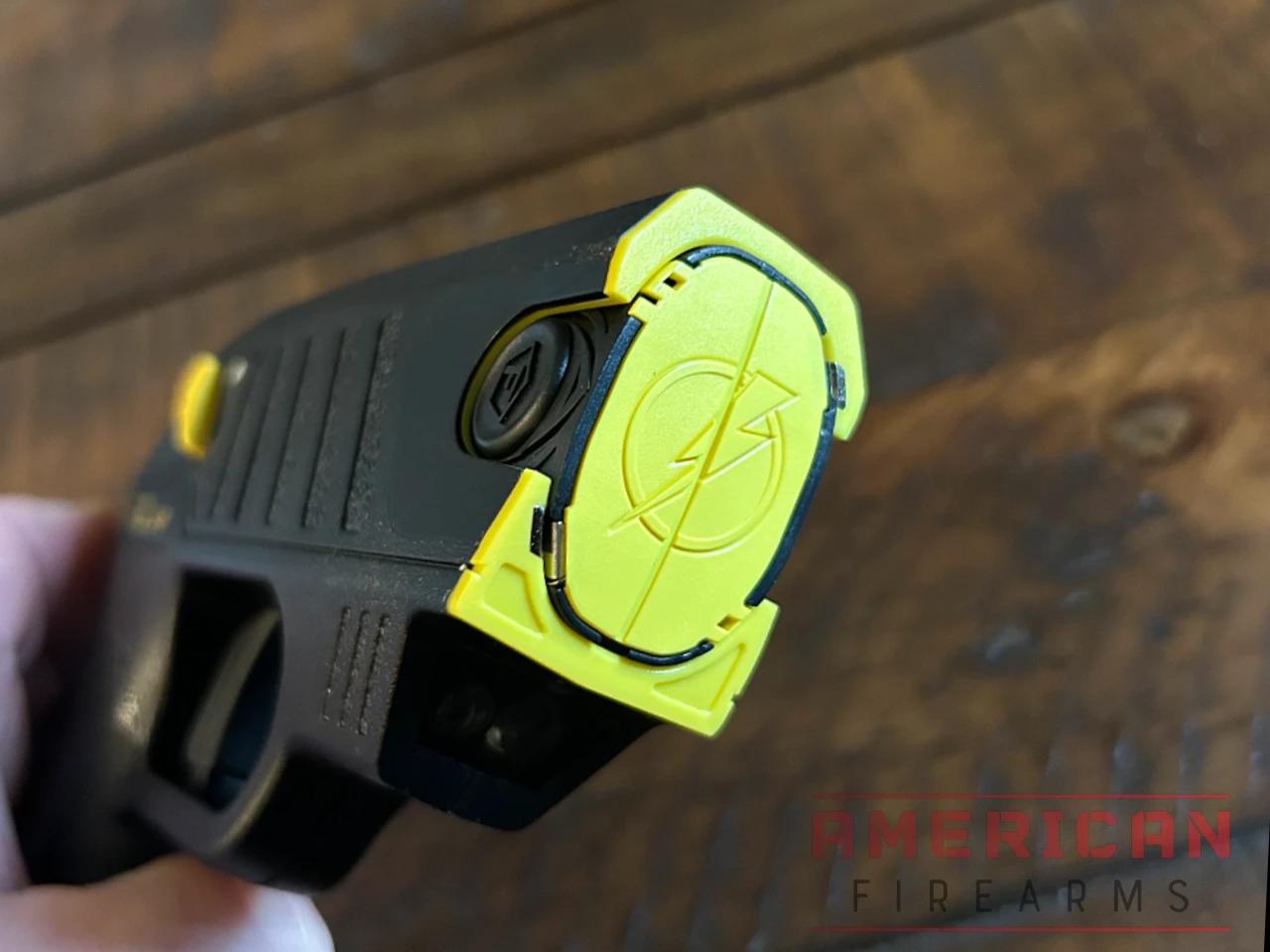
Sights & Laser:
The molded polymer sights feel a lot like what you might find on an LCP or early-gen subcompact.
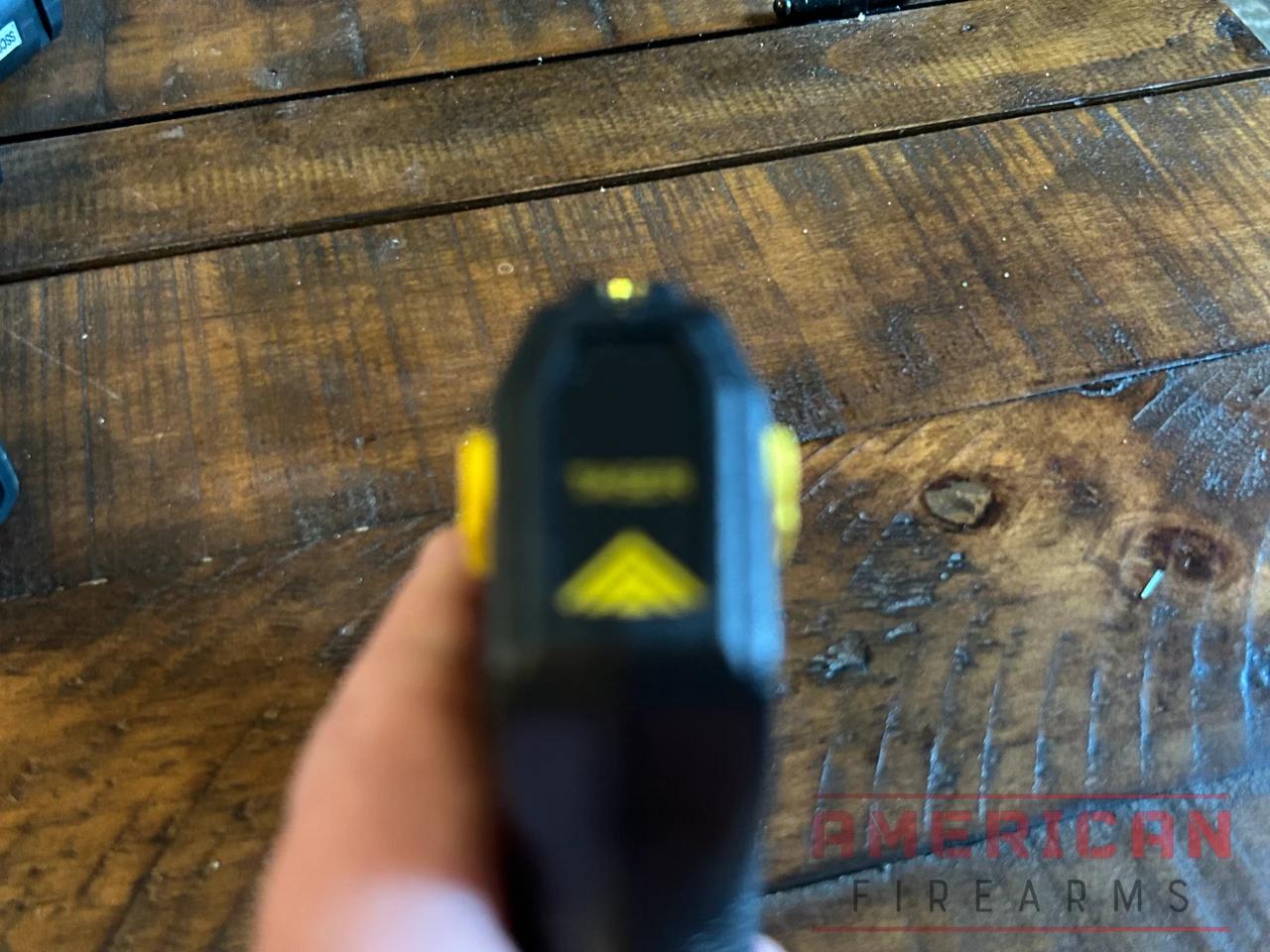
The bright yellow front sight offers a clear contrast to the black integral notch rear sights, but they’re very low on the unit, making it tough to get a clear sight picture quickly.
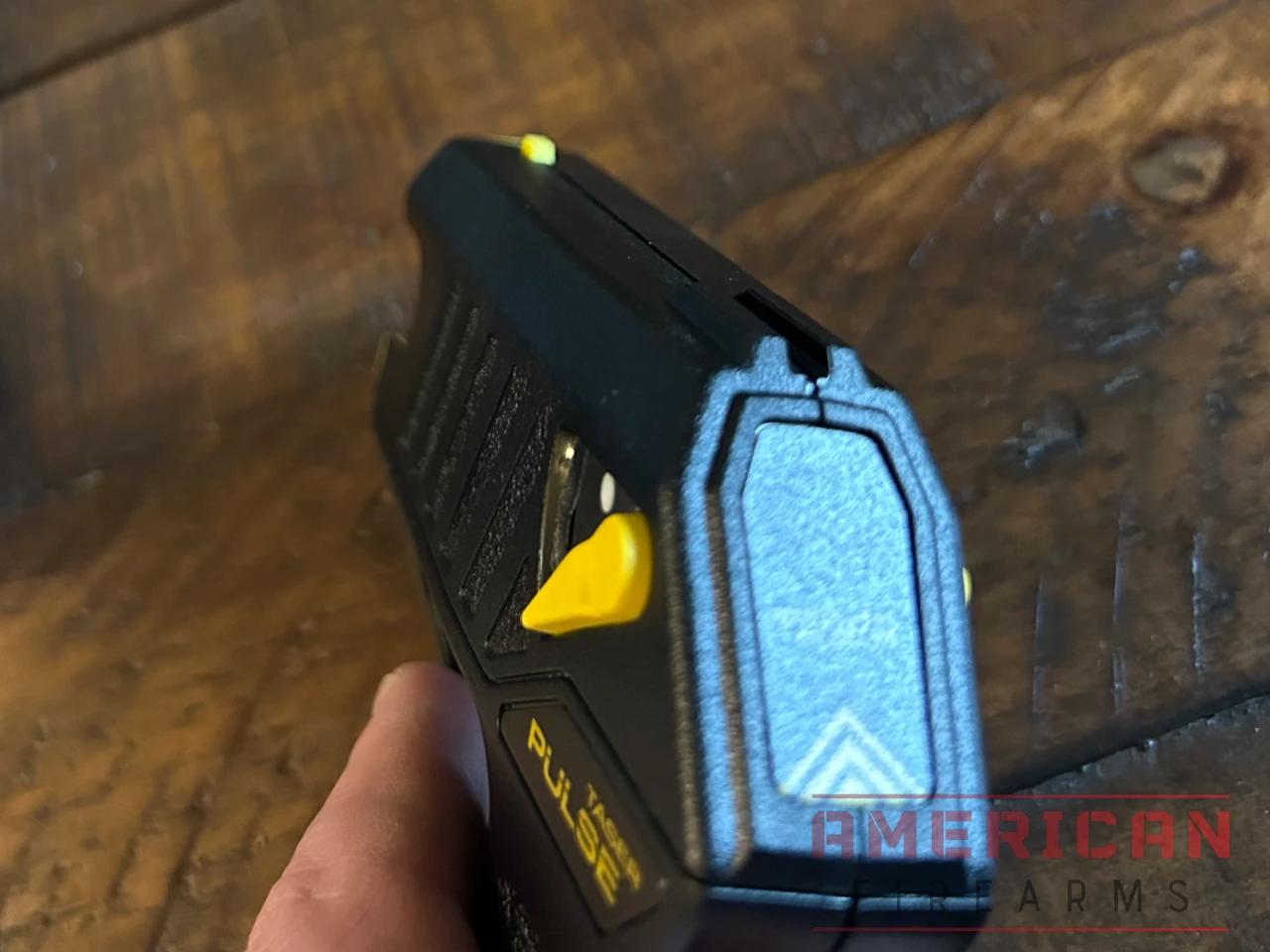
They’re also non-adjustable, but that’s not a must-have when you’re talking about 15 feet of effective range.
I found that the integrated laser often became my go-to for targeting. Historically, lasers in personal defense tools were pretty gimmicky, but with the Pulse 2, it’s clear that the laser serves a true purpose — it’s well aligned with the sights and illuminates when you activate the unit, so it naturally becomes your point of aim.

You’re not going to get 100 yards of visibility out of it, but that’s well beyond the Pulse’s 15 foot range anyway.
LED Light:
While the LED light might not be the brightest on the market, it does its job. It provides enough illumination to identify a potential threat in low-light conditions, and I found it was bright enough to clearly illuminate a hallway, bathroom, or medium-sized room.

A larger room or garage will only be lit up about 50%, meaning you’ll need to stay aware if transitioning from a small space to a larger one.
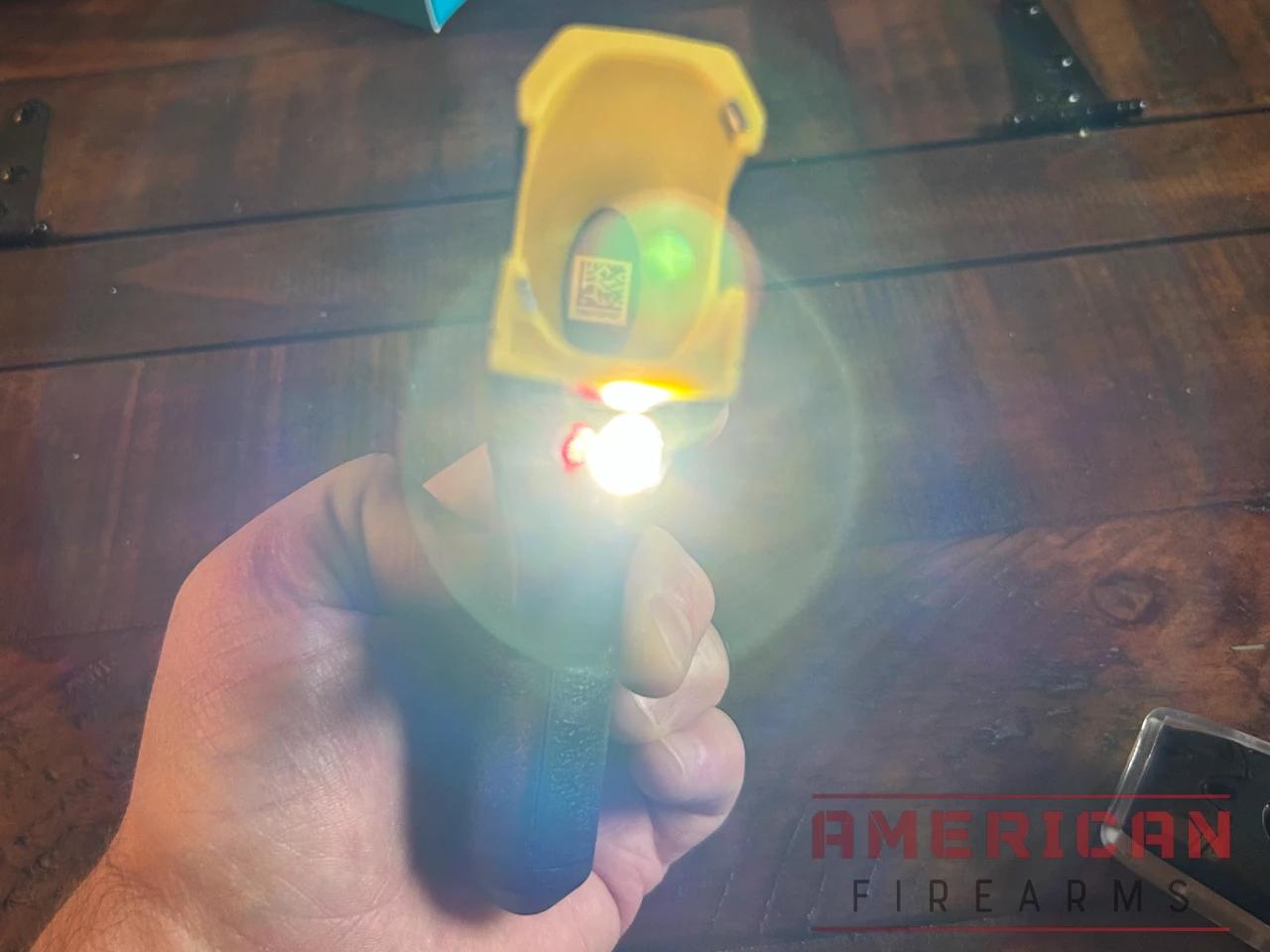
The light is bright enough to be irritating to an assailant but isn’t powerful enough to fully blind someone.
Battery & Status Indicator:
At the rear of the unit is the battery status indicator, a feature I found particularly smart.
It lights up when the unit is activated, making it easy to check before you holster the unit and head out. Clearly, the last thing anyone wants is to discover the battery is out of juice when you need it most.
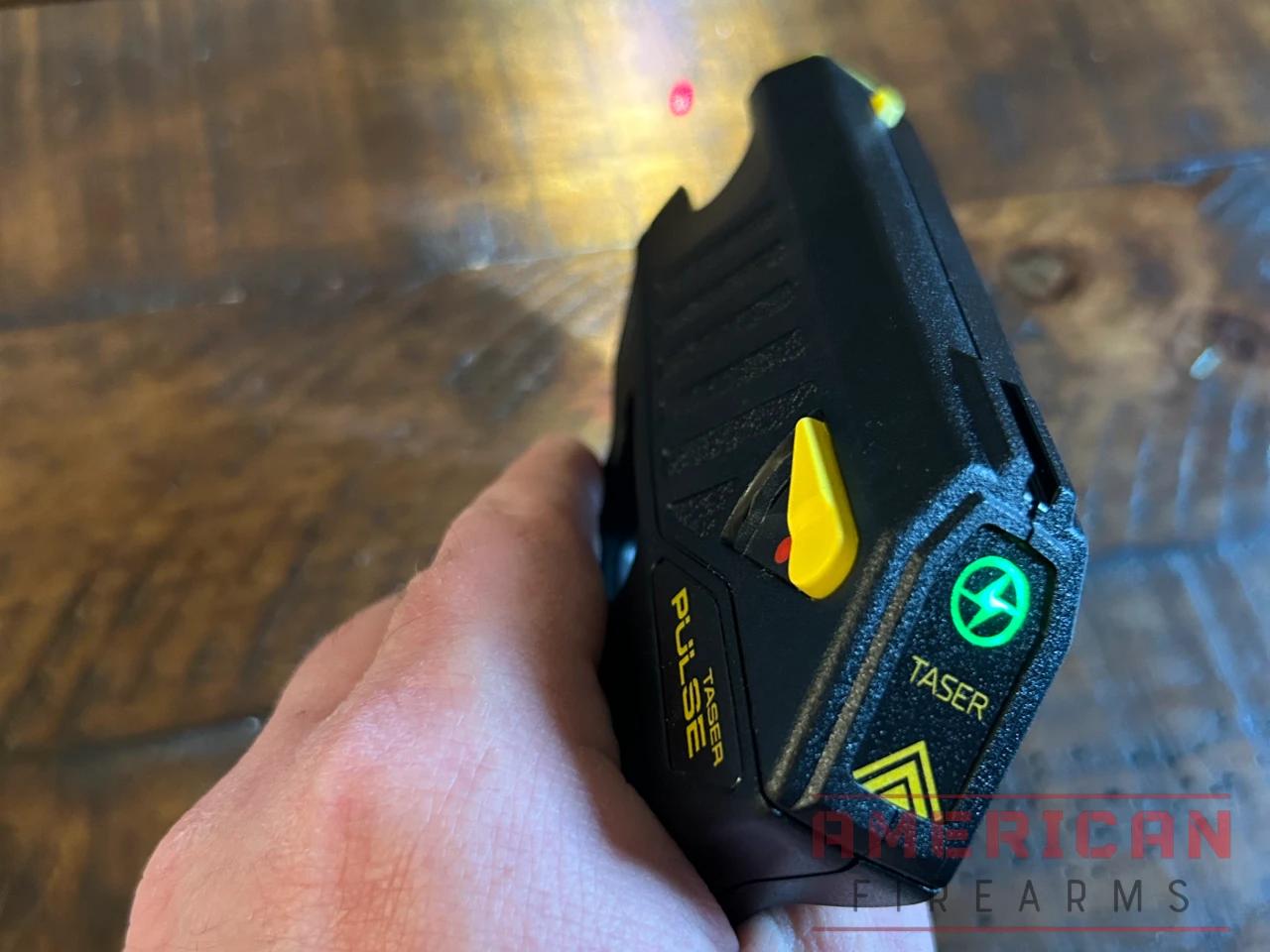
I’m conflicted about the battery itself. The Pulse 2 is powered by a small, non-rechargeable lithium battery stored in the grip, that is said to last 50 firings or 2 years.
On one hand, I appreciate the simplicity of the “one and done” approach — you don’t *need* to really think about the battery unless the charge indicator tells you it’s running low.

On the other hand, if you’re paying $400 for the unit, many people I know would prefer to be able to recharge the battery vs. shelling out $25 for another one down the road.
Contact Points & Range:
On the front end of the Pulse 2 are two metal contact points. These are where the arc of electricity jumps across, activating the cartridges. The Pulse 2 boasts a range of 15 feet, thanks to its flying barbed probes.
This range provides a safety cushion, allowing users to engage a threat without getting too close.

The Pulse’s probes fire in an over-under orientation (rather than side-by-side) which arcs the lower probe down to ensure appropriate spacing for the deployment of the shock.
I tested my cartridges at the specified 15 feet, with the dart spread landing at 2 feet across the test target. I was curious about how additional distance would impact the spread, so I dropped back to 20 feet (granted, well outside the accepted range), which saw the lower dart miss the target entirely. Closer is better with the Pulse 2.
Duration of Effect:
I really like how the Pulse 2 continues to deliver an electric shock for 30 seconds without the user needing to continually press the trigger. Once the probes hit the target you can drop the unit and get out of the situation.
If needed, reactivating the safety will shut off the shock. You can (if you’re a bit of a sadist) then pull the trigger and tase for another 30 seconds.
While some might shirk at the idea of leaving their self defense tool at the scene, the good news is TASER has what they call a “Safe Escape Product Replacement Guarantee”, that guarantees you a new unit if a police report deems your use lawful self-defense.
My Experience With The Pulse 2
When I first laid my hands on the Pulse 2, I was impressed. The design, while reminiscent of a subcompact handgun, feels different from a traditional handgun.
It’s lightweight, weighing in at just 8 ounces, very short, and the polymer build gave it a smooth, almost toy-like, quality. For comparison, a Glock 19 weighs 29 oz when loaded, so you’re talking about a product that’s almost one-quarter a compact pistol’s weight.
While there are a variety of holsters available from TASER for the Pulse 2, as I carried it over the summer, I found it was almost perfect for pocket carry.
It’s so short and light that it practically disappears in the pocket. Plus, the fact the unit is disabled without throwing the activation lever means it’s safe to carry around with the cartridge in place without concern for giving yourself an unintentional jolt.
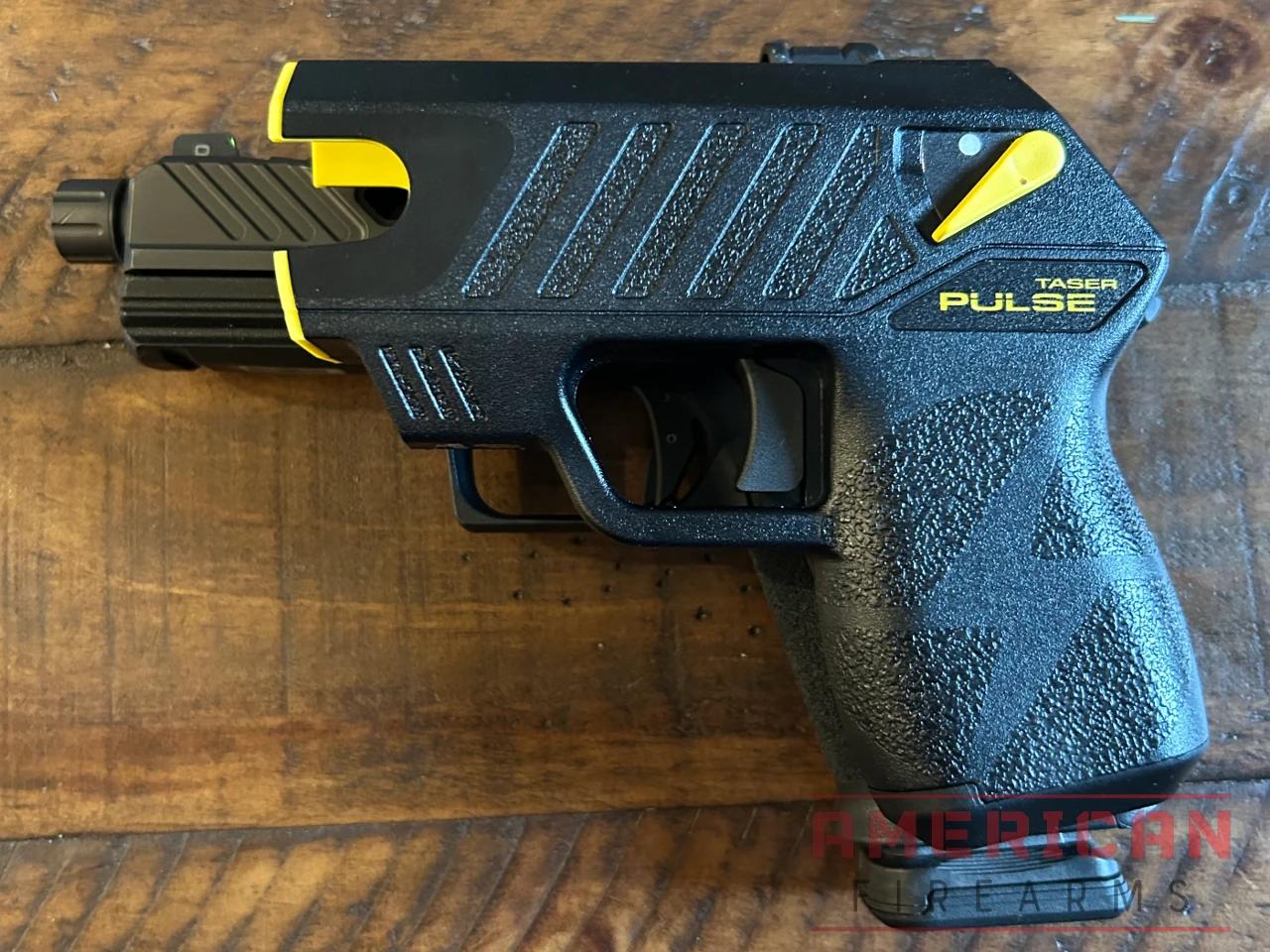
The grip is comfortable, if not particularly tactile, but considering there’s no need to control for much of any recoil, the grip is adequate. I can’t get a full grip (my pinkie hangs off much like when shooting an LCP), but it’s sufficient for the intended purpose.
The TASER Pulse 2, while designed for civilians, builds on the legacy of TASER devices that were initially aimed at the law enforcement market. The Pulse 2, however, is available to almost anyone without the need for licensing in most states.
This accessibility is fantastic for those of us who want an effective, less-lethal defense option.
Using the Pulse 2 is straightforward. Insert a cartridge (there’s no wrong way to do it), flip the activation lever up, ensure the battery has a decent charge, and you’re ready to go. The cartridges, when fired, release two darts that deliver a 30-second charge of electricity, giving you ample time to get out of there.
As mentioned previously, you can flip the safety back on to stop the jolt, then activate the shock if needed. If you miss your target you can drop the spent cartridge and use the contact stun option, which just involves pulling the trigger.
However, it’s essential to understand the device’s limitations. The Pulse 2 requires both prongs to hit the target for it to be effective. Thick clothing can sometimes be a challenge, although TASER mentions that the darts will penetrate most clothing types and the electricity can jump up to two inches to reach the skin, so getting close to open skin can still produce the desired effect.
My experience with the TASER Pulse 2 has been largely positive. It offers a balance between safety and effectiveness, making it a valuable addition to my personal defense toolkit.
While it’s not a replacement for traditional firearms, it provides an alternative for people who aren’t comfortable carrying lethal force but still want an effective self-defense tool.
Potential Issues
While the TASER Pulse 2 offers a compelling solution for those seeking a less-lethal defense option, it’s essential to approach it with a clear understanding of its potential limitations and considerations. Here’s my take on some of the issues you might encounter and factors to keep in mind.
One-Shot Cartridges:
The Pulse 2 operates with single-use cartridges, meaning once you’ve fired, you’ll need to replace the cartridge to use it again. This limitation can be a concern in situations where multiple threats are present.
Historically, many weapons, like the single-shot muskets used in the Revolutionary War, had similar limitations. Soldiers had to be strategic, knowing they might only get one shot before needing to reload.
Effectiveness Against Thick Clothing:
While the TASER Pulse 2 is designed to penetrate most clothing types, there’s a possibility that especially thick clothing could hinder its effectiveness.
The electricity needs to reach the skin to incapacitate, and while it can jump up to two inches, there’s no guarantee in every situation.
The Battery:
The Pulse’s battery is designed to last about two years. While this might seem like forever, the inability to charge the unit is a downside in my opinion, making it crucial to regularly check the battery status, especially if you’ve used the contact stun feature frequently.
A device with a depleted battery could leave you vulnerable at a critical moment.
Potential Misidentification:
The Pulse’s design, while user-friendly, closely resembles a subcompact handgun. This similarity could lead to potential misidentification, especially in high-stress situations.
There’s a historical parallel here: during World War II, the British Sten gun and the German MP40 had similar profiles, leading to occasional friendly fire incidents.
Lack of Familiarity:
Like any defense tool, the effectiveness of the TASER Pulse 2 is closely tied to the user’s familiarity and training with the device. It’s not just about knowing how to fire it, but also understanding its range, limitations, and how to handle potential malfunctions or misfires.
Take, for example, my least favorite thing about the Pulse 2: its deactivation mechanic. There’s no way to deactivate an active deceive with the trigger alone — you have to use your free hand to switch the safety back on.
This feels unnecessarily complicated to me. Why not a 2-second hold of the trigger to deactivate? This is especially problematic with the contact mode where you’ll be within arm’s length of the target. Why occupy the user’s free hand with the deactivation?
Pros and Cons
The Good:
- Provides a non-lethal means of self-defense, reducing the risk of causing permanent harm.
- Easy to handle and carry.
- Includes an LED light and laser for better target identification and accuracy.
- Simple operation with a clear battery status indicator.
- Offers a safety cushion with an effective range of 15 feet.
- 30-second electric shock gives users plenty time to retreat.
- Available to civilians in most states without the need for special licensing.
The Bad:
- Once fired, the cartridge needs to be replaced, which can be a limitation in situations with multiple threats.
- The device’s effectiveness can be compromised if the target is wearing particularly thick clothing.
- While the battery is designed to last about two years, frequent use of features like the LED light might deplete it faster.
- Due to its resemblance to a handgun, there’s a risk of misidentification, especially in high-stress situations.
TASER Pulse 2 vs Other Less-Lethal Options
The less-lethal self-defense market has expanded significantly over the past decade, giving you options beyond the traditional choice between doing nothing and carrying a firearm. The Pulse 2 sits in a specific niche within this market, and understanding how it compares to alternatives helps clarify whether it’s the right tool for your particular needs and circumstances.
TASER Pulse 2 vs TASER Bolt 2
TASER offers two civilian models that use identical cartridges and deliver the same neuromuscular incapacitation—the gun-shaped Pulse 2 and the flashlight-shaped Bolt 2. The Bolt 2 costs fifty dollars more at $449.99, and that premium buys you a less threatening appearance at the cost of a slightly different handling characteristic.
The Bolt 2’s flashlight form factor makes it less likely to be mistaken for a firearm, which matters in two scenarios. First, if you’re in a situation where brandishing might de-escalate without deployment, the Bolt 2 looks less aggressive than the pistol-shaped Pulse 2. Second, in the aftermath of a defensive use, witnesses and responding officers won’t initially perceive it as a gun, which could prevent tragic misidentification in high-stress moments.
However, the Bolt 2’s cylindrical grip means you’re aiming more like a flashlight than a handgun. There are no iron sights—you’re relying entirely on the red laser for targeting. I tested both models side by side, and while the laser works adequately in low light, trying to track it on a target in bright daylight at 15 feet proved difficult with the Bolt 2. The Pulse 2’s iron sights give you a backup aiming method that follows familiar handgun fundamentals. If you’ve trained with pistols, the Pulse 2’s manual of arms will feel more natural.
The Bolt 2 also weighs slightly more at 8.4 ounces versus the Pulse 2’s 8 ounces, and its 6.5-inch length makes it less suited for IWB carry than the Pulse 2’s 5.25-inch profile. For pocket carry or purse carry, the differences matter less, but if you’re planning to carry on your person in a holster, the Pulse 2 offers better concealability.
My recommendation: if you’re specifically concerned about the gun-like appearance creating problems in your carry environment—say you work in a corporate office where even the outline of something gun-shaped could cause issues—the Bolt 2’s extra fifty dollars buys you peace of mind. For everyone else, the Pulse 2’s more familiar ergonomics and iron sight backup justify sticking with the pistol form factor.
TASER Pulse 2 vs Pepper Spray
Pepper spray costs between ten and thirty dollars for a quality canister, making it roughly forty times cheaper than the Pulse 2’s $400 entry price. That price difference demands serious justification, and whether the Pulse 2 provides enough additional capability to warrant the cost depends heavily on your specific circumstances and risk assessment.
Quality pepper spray formulations deliver effective range of 10 to 12 feet, compared to the Pulse 2’s 15-foot capability. That three-to-five-foot difference doesn’t sound dramatic until you’re actually creating distance from a threat—those extra feet can be the difference between an attacker closing the gap during deployment and maintaining enough standoff to escape. More significantly, the Pulse 2’s neuromuscular incapacitation works regardless of an attacker’s pain tolerance, chemical state, or determination. Pepper spray relies on causing sufficient pain and respiratory distress to discourage further aggression, which means it can fail against attackers under the influence of certain drugs or individuals with high pain tolerance.
The most significant limitation of pepper spray is environmental vulnerability. Wind can blow the spray back toward you, rain can reduce effectiveness, and deploying it indoors means you’re likely to contaminate yourself along with your attacker. I’ve trained with OC spray and been accidentally exposed during indoor scenarios—it’s absolutely miserable, and your defensive capability drops significantly when you can’t see or breathe properly. The Pulse 2’s probes aren’t affected by wind, weather, or indoor use, though thick clothing can reduce effectiveness.
Pepper spray does offer one major advantage: multiple deployments per canister. A typical canister provides 10 to 20 one-second bursts, compared to the Pulse 2’s single cartridge before reloading. If you’re facing multiple attackers or miss your initial deployment, pepper spray gives you immediate follow-up capability. Reloading a TASER cartridge under stress takes several seconds and requires fine motor skills that degrade during adrenaline dump.
| Feature | Pepper Spray | TASER Pulse 2 |
|---|---|---|
Cost | $10-30 | $399.99 |
Effective Range | 10-12 feet | 15 feet |
Mechanism | Pain/respiratory distress | Neuromuscular incapacitation |
Environmental Factors | Wind rain affect performance | Weather resistant (not waterproof) |
Indoor Use | Risk of self-contamination | Safe for indoor use |
Deployments | 10-20 bursts | 1 shot (multiple 30-second cycles if probes stay attached) |
Effectiveness Through Clothing | Not affected | Reduced by thick/loose clothing |
Legal Restrictions | Legal in most areas | Legal in 49 states some local restrictions |
Training Required | Minimal | Moderate (practice recommended) |
Wrap Up
While the TASER Pulse 2 offers a unique and valuable addition to personal defense options, it’s essential to approach its use with a comprehensive understanding of its potential issues and considerations.
Being informed and prepared will ensure that you can use the device effectively and safely when it matters most.
Updated
December 26, 2025 – Updated article from outdated original Pulse review to comprehensive Pulse 2 coverage. Added critical comparison between Pulse generations, detailed testing methodology, complete specifications table, and extensive less-lethal alternatives analysis covering Bolt 2, pepper spray, and stun guns.
Sign up for our newsletter
Get discounts from top brands and our latest reviews!






